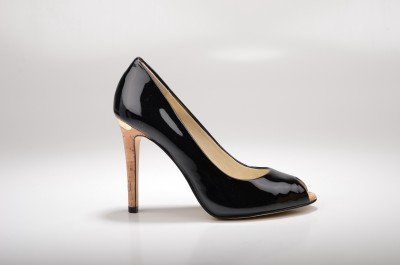Existing dress code laws are not fully effective, says report
 A report into high heels and workplace dress codes has concluded that the existing government laws are not fully effective in protecting employees from discrimination at work.
A report into high heels and workplace dress codes has concluded that the existing government laws are not fully effective in protecting employees from discrimination at work.
Following a high-profile case in December 2015, when a woman turned up to work in flat shoes and was told that it was company policy for women to wear heels of a height between 2 and 4 inches, a petition was started calling for the law to be changed regarding company dress codes.
A report published by the Petitions Committee and the Women and Equalities Committee in January says that in the inquiry into dress code practices in the workplace, they heard from hundreds of women who had suffered long-term damage as a result of wearing high heels for long periods in the workplace.
They also heard from women who had been required to dye their hair blonde, wear revealing outfits and constantly reapply make-up.
During the course of the inquiry, the government said that the exisiting law was clear and that the dress code that prompted the petition to come about was already unlawful.
The inquiry found that although the law already prohibited discriminatory dress codes, they were nonetheless widespread and that therefore the law wasn’t fully effective in protecting employees from discrimination at work.
The report calls on the Government to review this area of the law and to ask Parliament to change it, if necessary, to make it more effective.
Health and safety
The report states that workplace dress codes include other areas of law – including health and safety.
The report says that in the first oral evidence session, health and safety was repeatedly raised as a concern by witnesses.
Although employers are required by law to conduct workplace health and safety risk assessments, often employers were not thinking about the risks of high heels in their health and safety risk assessments.
Azmat Mohammed of the Institute of Directors and Scarlet Harris of the TUC told the evidence sessions that general workplace risk assessments do not go into detail about footwear and, where they do, they tend to focus on personal protective clothing (for example, shoes with steel-capped toes worn on a construction site).
The report said that it is not obvious to employers that they should routinely be assessing requirements to wear high heels
Commenting on the report on high heels and workplace dress codes published by the Petitions Committee and Women and Equalities Committee, TUC General Secretary Frances O’Grady said: “Far too many employers are still stuck in the past when it comes to dress codes. It is unacceptable that in 2017 bosses are still forcing women to wear painful, inappropriate shoes and uniforms.
“Wearing high heels on a regular basis can cause foot, knee and back problems. High heels and make-up should be a choice, not a condition of the job.
“But with employment tribunals costing up to £1,200 – even if you’re on the minimum wage – many women can’t afford to challenge sexist policies. If ministers are serious about enforcing equality legislation then they should scrap tribunal fees immediately.”
The full report on high heels and workplace dress codes can be read on the House of Commons site.
Existing dress code laws are not fully effective, says report
A report into high heels and workplace dress codes has concluded that the existing government laws are not fully
Roz Sanderson
SHP - Health and Safety News, Legislation, PPE, CPD and Resources
Related Topics
Rail cuts will compromise safety with loss of 670,000 maintenance hours, according to TUC report
Safe return to the workplace guidance for employers
Quarter of employers not implementing social distancing in the workplace, and few people with symptoms are self-isolating, says research


Very interesting topic, I have always wanted to work along with soeon who was brave enough to write these articles for women
who wear these shoes all day long.
Celine